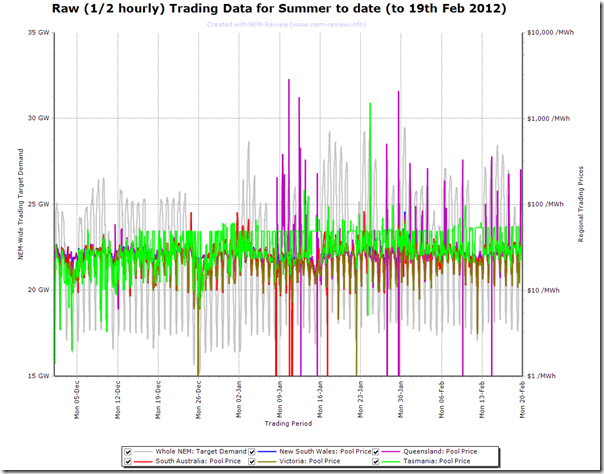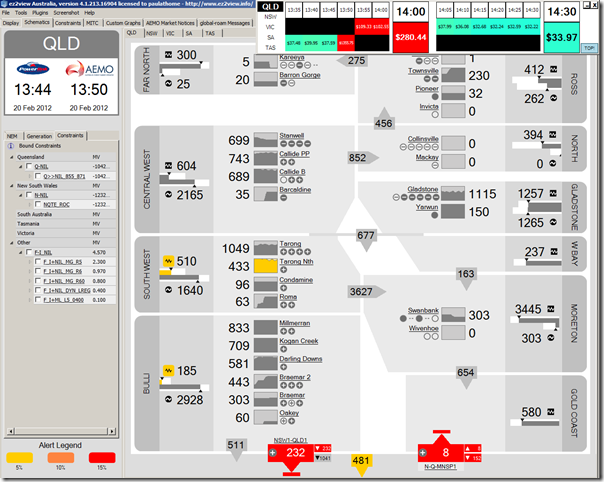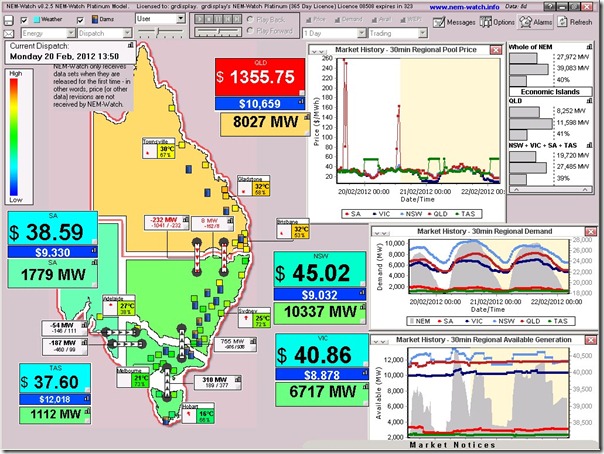With summer almost over, we’ve yet to see demand yet to rise above the 30,000MW mark – as shown in the following chart from NEM-Review 6:
With demand levels so low, it’s no surprise to see that prices across most regions have remained in the doldrums for most of the summer. Indeed, the following table highlights the depressed nature of the market:
| Highest Trading Price thus far | |
| Queensland | $2,892.65/MWh on 10th January
(one of only 3 trading periods above $1000, up until midnight this morning) |
| New South Wales | $81.51/MWh
(yes, that’s the highest it has reached) |
| Victoria | $108.91/MWh
(next highest $66.57/MWh) |
| Tasmania | $1,526.64/MWh on 24th January
(but only one trading interval – next highest $145.40/MWh) |
| South Australia | $121.66/MWh
(next highest $83/MWh) |
One can understand, then, that the generators (depending on their level of hedge cover) are not all that happy at present … which makes it even more understandable why the generators would use every opportunity that presents itself to generate even a moderate uplift in spot prices – such as with respect to transmission constraints in central Queensland.
A view from our dashboard for traders (ez2viewAustralia) provides a view of what’s been happening this afternoon as prices jump all around the place as a result of the 855-871 constraint:
We can see (in the trended capacity factor charts for each station) that the output of stations like Callide, Tarong and Gladstone have been oscillating for much of the day, in response to this particular constraint.
The AEMO’s constraint report for 2011 reported that this constraint was bound for 217 hours in 2011 (down from 470 in 2010).
Just from watching the market this past 7 weeks (since the year ticked over) we have seen this constraint operating frequently, and many of the price blips shown for QLD in the price trend above coincided with the binding of this constraint.
Incidentally, here’s a view of the same dispatch interval (13:50) as seen through our widely-used NEM-Watch product, which highlights (in the colour-coding of the regions) that the demand in QLD today has crept up towards its all-time record, driven there by the higher temperatures being experienced today.





Leave a comment